The Golden Age of American Musical Theatre
19431965
Corinne J. Naden

THE SCARECROW PRESS, INC.
Lanham Toronto Plymouth, UK
2011
Published by Scarecrow Press, Inc.
A wholly owned subsidiary of The Rowman & Littlefield Publishing Group, Inc.
4501 Forbes Boulevard, Suite 200, Lanham, Maryland 20706
http://www.scarecrowpress.com
Estover Road, Plymouth PL6 7PY, United Kingdom
Copyright 2011 by Corinne J. Naden
All rights reserved . No part of this book may be reproduced in any form or by any electronic or mechanical means, including information storage and retrieval systems, without written permission from the publisher, except by a reviewer who may quote passages in a review.
British Library Cataloguing in Publication Information Available
Library of Congress Cataloging-in-Publication Data
Naden, Corinne J.
The golden age of American musical theatre : 19431965 / Corinne J. Naden.
p. cm.
Includes bibliographical references and index.
ISBN 978-0-8108-7733-7 (cloth : alk. paper) ISBN 978-0-8108-7734-4 (ebook)
1. MusicalsUnited States20th centuryHistory and criticism. 2. MusicalsStories, plots, etc. 3. Musical theaterUnited StatesHistory20th century. I. Title.
ML1711.N22 2011
792.609747'1dc22 2010028844
 The paper used in this publication meets the minimum requirements of
The paper used in this publication meets the minimum requirements of
American National Standard for Information SciencesPermanence of Paper
for Printed Library Materials, ANSI/NISO Z39.48-1992.
Printed in the United States of America.
In memory of Rose Blue,
and with thanks to Abby Simon and Trudi Neuhoff
for all their technical and uncomplaining help.
A very special thank you to
my longtime friend and avid theatregoer Harold C. Vaughan
for trusting me with all his original playbills .
Contents
Americas Unique Contribution 1
The History of Broadway 7
Golden Age Timeline 35
The Golden Age Musicals of Broadway 43
The Golden Age Stars of Broadway 147
The Theatres of Broadway 187
The Awards of Broadway 203
Appendix of Show Tunes 209
Bibliography 247
Index 253
About the Author 267
Americas Unique
Contribution
T he musical, or musical comedy, is Americas unique contribution to the world of the theatre. The words Broadway musical refer to any performance incorporating music and dance in one of thirty-eight professional theatres that each seat 500 or more people in the Times Square district of the borough of Manhattan, New York City. The Vivian Beaumont at Lincoln Center (uptown at 65th Street) is the thirty-ninth Broadway-class theatre. It is the only one not located in the Times Square district, which is roughly defined as the area between 40th and 53rd streets and 6th and 9th avenues. The district got its name from the Times Tower, headquarters of the New York Times , built in 1904, on 43rd Street just off Broadway. Nonmusical performances, known as plays or dramas, are also performed in the Broadway theatre district.
To the English-speaking world, Broadway theatre, along with Londons West End district, generally represents commercial theatre at its highest level. It is the theatre area most well known to the American general public, the most prestigious for performers, and the most lucrative for all those involved in the business of putting on a show. Historically, the shows that make it to Broadway are seen as more mainstream or less experimental than many of the performances Off- and Off-Off-Broadway or in regional theatres throughout the country.
Off-Broadway refers to plays or musicals performed in New York City in theatres seating 100 to 499 patrons. Originally the term referred to location, not size. These productions are generally less publicized, less expensive, and less well-known. A number of shows that began in these smaller theatres have made it to Broadway, such as A Chorus Line , Hair , and Sunday in the Park with George . Off-Broadway theatres include the Astor Place on Lafayette Street, the Cherry Lane on Commerce, and the Orpheum on Second Avenue.
Off-Off-Broadway theatres generally have fewer than 100 seats. They began in 1958 as a reaction to Off-Broadway. The term was supposedly first used by Jerry Talmer of the Village Voice and referred to coffeehouses in Greenwich Village. There are a number of Off-Off-Broadway theatres scattered about the city, including La MaMa on Second Avenue, the Flea on White Street, and the Collapsable Giraffe in Brooklyn.
Off- and Off-Off-Broadway often present cutting-edge or experimental plays or musicals, many by first-time playwrights and performers. In addition to these productions, nearly 2,000 not-for-profit professional theatres operate around the United States, thanks in large measure to the National Endowment for the Arts (NEA). Since 1965, it has offered musicals and modern plays, classics, and new works to a theatre-loving public. The NEA is a public agency established by Congress. It supports new and established arts with the aim of bringing the arts to all Americans. NEA activities range from youth education to increasing access to high quality theatre. For instance, it launched Shakespeare in American Communities in 2003. In addition, it introduced American Masterpieces; theatre companies tour the states with outstanding American musicals.
The musicals that appear on Broadway usually have a longer run than nonmusical plays. Fiddler on the Roof , which opened in 1964, ran for a record-setting total of 3,242 performances. It kept the record for the longest-running Broadway musical for almost ten years, until Grease topped it. The aim of all Broadway shows is to make a profit for the producers and investors. Early audience response, advertising, the star quality of the leads, and word of mouth all generally contribute to how long a musical will runand usually, therefore, how financially successful it will be; however, even a fairly long run does not always guarantee that the musical finishes in the profit column. Some Broadway theatre is presented as a regular subscription season, such as Lincoln Center Theater, the Roundabout Theatre Company, or Manhattan Theatre Club. In that case, the run of the show is predetermined.
Most Broadway shows are open-ended (with many exceptions), meaning they will run as long as it is profitable to do so. But producers and investors (known as backers or angels) do not necessarily have to make a profit right now. If the show meets weekly operating expenses, it may stay open in the expectation that it will eventually pay back the initial costs. In addition to a hoped-for long Broadway run, producers often assemble a new cast and crew for a national tour. Some productions have settled down in major U.S. cities for a long run. Others play for one or two weeks. Smaller cities are serviced by bus and track tours; the cast usually travels by bus, and the equipment goes by railroad. These tours may play half a week or even a one-nighter in a town before moving on to the next.
Most Broadway theatres schedule evening performances Tuesday through Saturday, with an 8 p.m. curtain, and afternoon matinees on Wednesday and Saturday at 2 p.m. and on Sunday at 3 p.m. This schedule gives actors and crew members a Sunday-evening-until-Tuesday-evening weekend. When performances are not scheduled, the theatre is said to be dark.
The American musical that is today so much a part of the Broadway theatre scene can trace its origins back to Europe in the first decades of the twentieth century, to the immigrants who arrived from the Old World with operalike performances known as operettas. Although the background of the Broadway musical may be in Europe and its antecedents may be traced to burlesque and vaudeville, to minstrels and music halls, the shows that began in the late nineteenth century and still light the marquees of Broadway are mainly all-American. From those decades of building a new art form, this book concentrates on the Golden Age of Americas musical theatre. The time span is twenty-two years, from Oklahoma! in 1943 to On a Clear Day You Can See Forever in 1965.


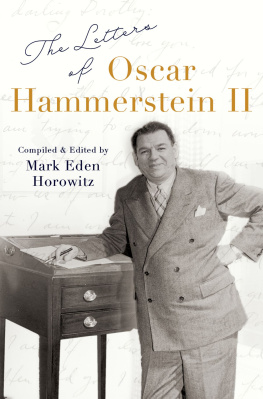

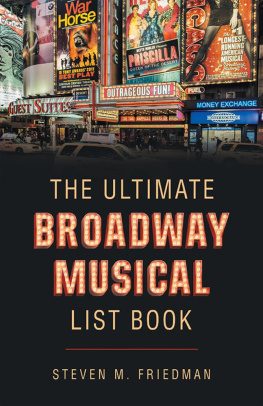



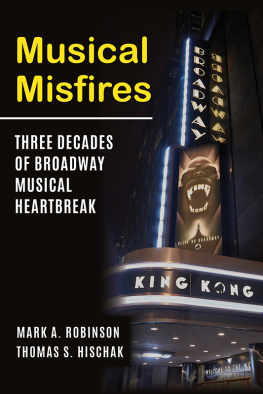
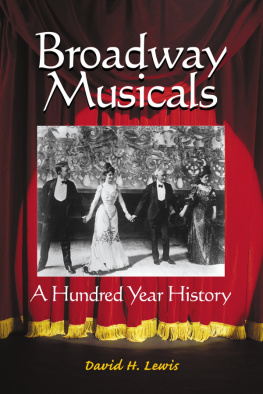
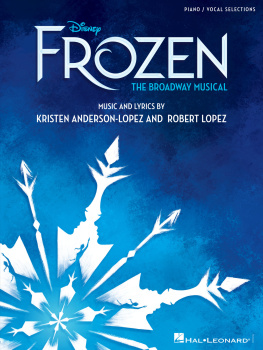
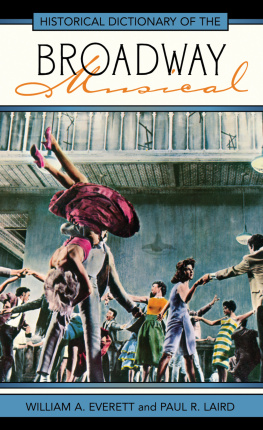
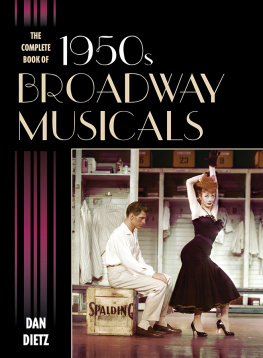

 The paper used in this publication meets the minimum requirements of
The paper used in this publication meets the minimum requirements of